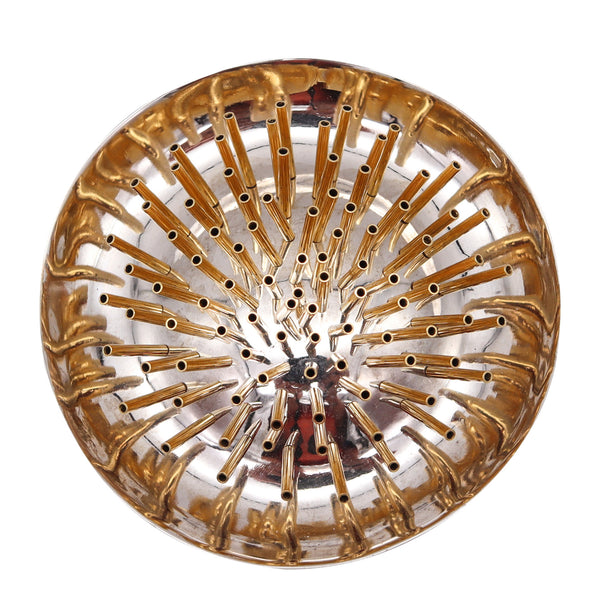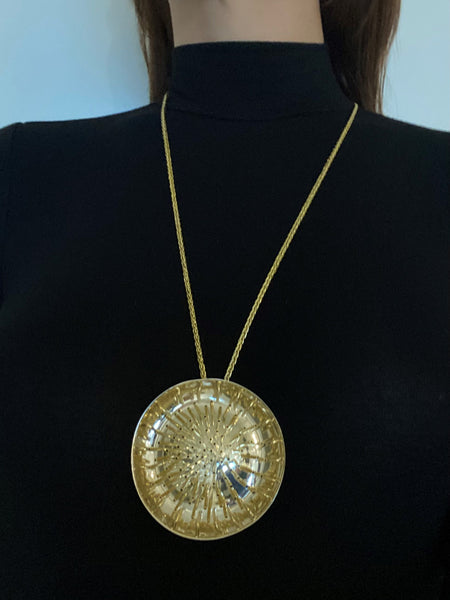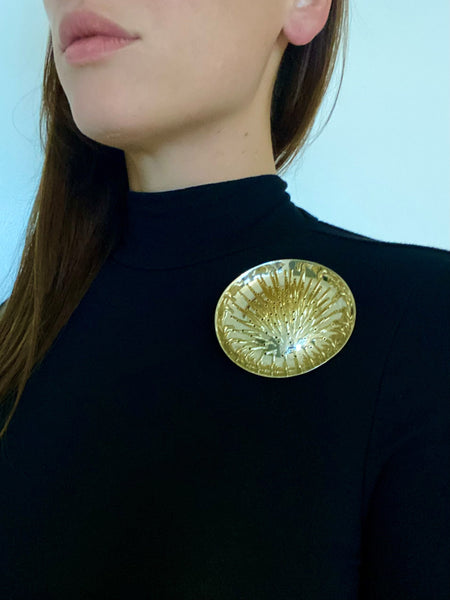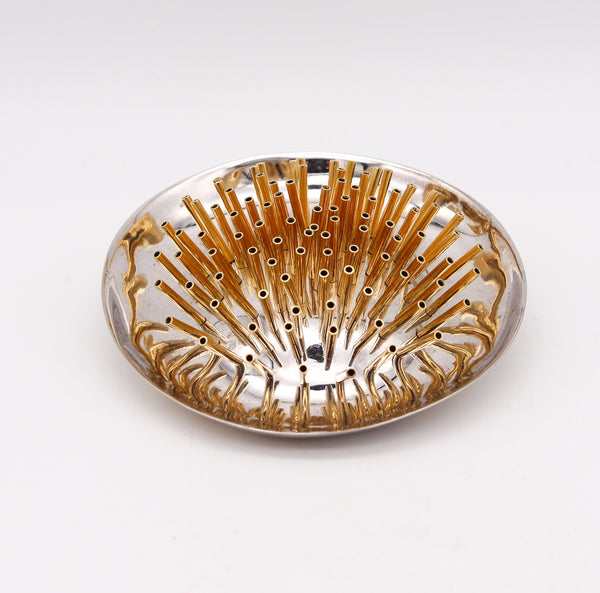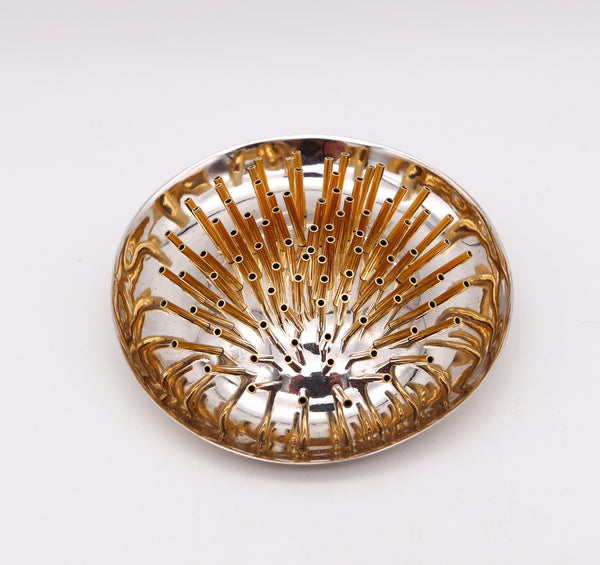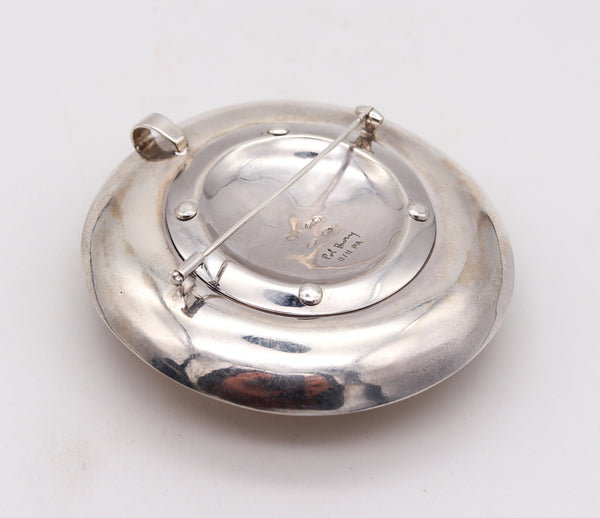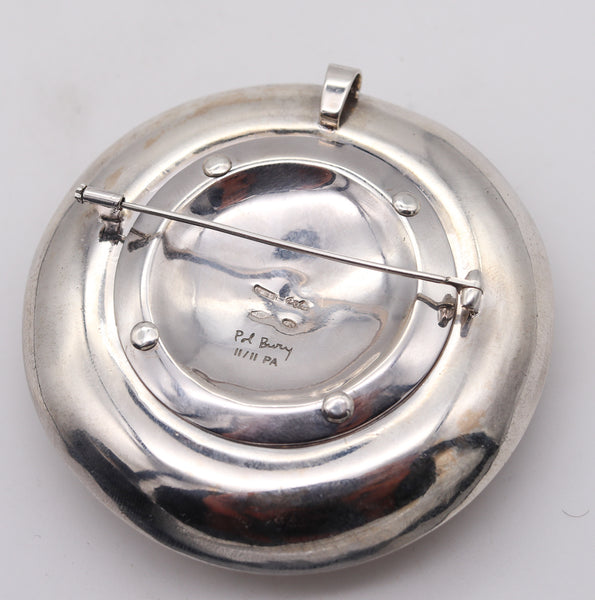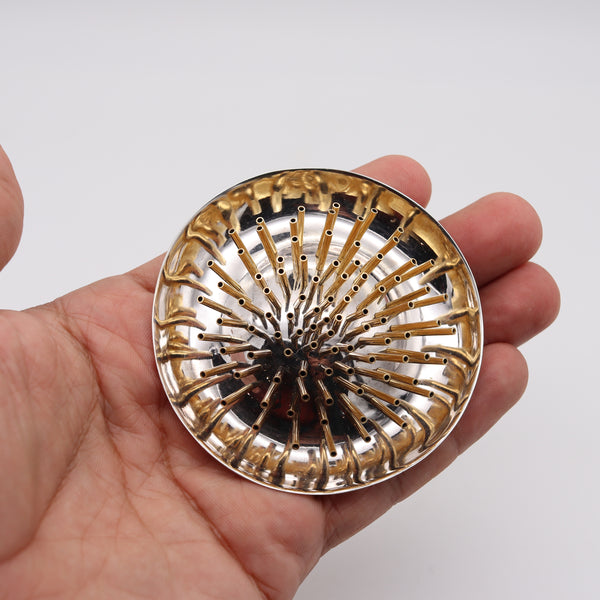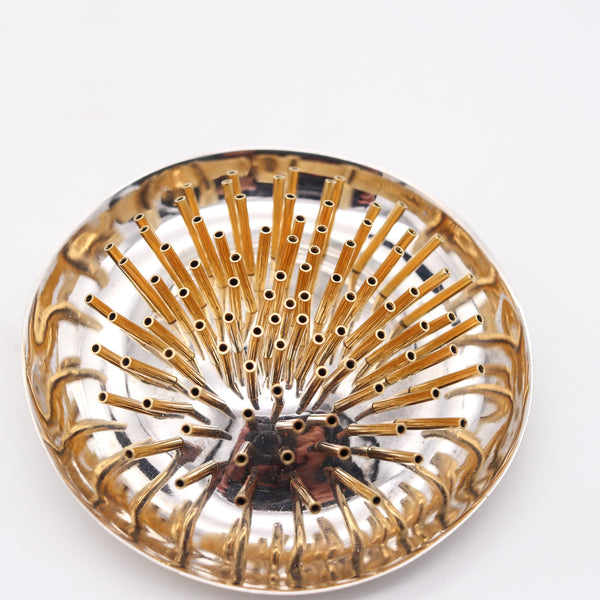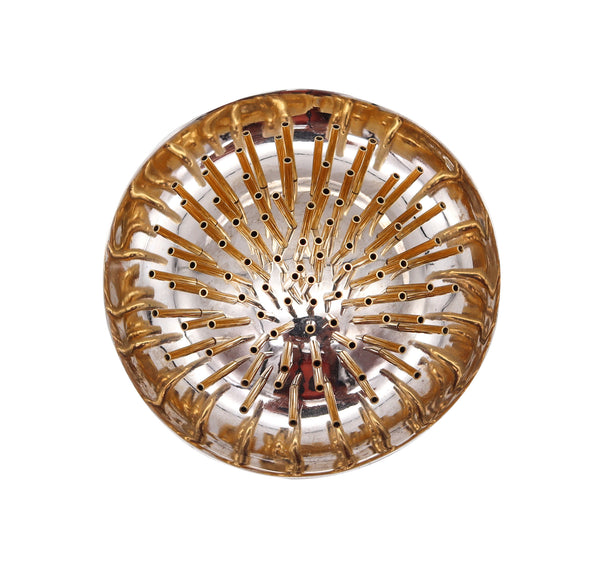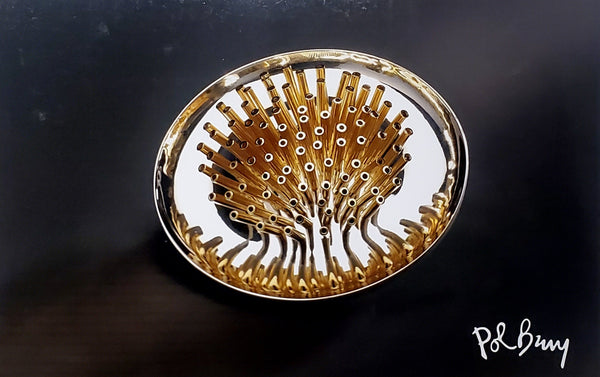Pol Bury Belgium 1968-2002 Rare Sculptural Kinetic Tremblant Spikes Pendant Brooch In 18Kt Gold
A Kinetic spikes pendant-brooch designed by Pol Bury (Belgium 1922-2005).
An exceptional and very rare sculptural piece of Kinetic and Op-art, created in 1968-2004 by the Belgian Artist Pol Bury. This SPIKES TREMBLANT pendant brooch has been carefully crafted in solid white gold of 18 karats with very high polished finish and elements in yellow gold. It is fitted at the reverse with a fixed bale to wear in a chain or necklace and a hinged horizontal bar with a lock to wear as a brooch.

The design of this wearable sculpture is made up of several elements. A concave circular platform from which multiple tubular spikes of various sizes emerge. These spikes contrast with the base and move freely on its base. They move in tremblant and the sound they produce gives the impression of moving water since the design was based on the model of the famous water fountain designed by Pol Bury in 1968 (See figures).
Has a total weight of 88.95 Grams and a diameter of 76.2 mm (3 Inches ).
Stamped, with the maker's mark, the gold assay hallmark and signed twice, "POL BURY 11/11 PA 287VR .750".
Pol Bury, is best known for his kinetic sculptures, a Belgian artist that began his career as a surrealist painter heavily influenced by the work of Rene Magritte and Yves Tanguy. After turning to geometric abstraction and associating briefly with the Cobra Group, an avant-garde movement that espoused the complete freedom of color and form, Bury discovered Alexander Calder's work and began making mobiles of painted shapes and sculptures in which movement was emphasized. The movements he assigned to these sometimes-monumental works were often slow and almost imperceptible to the naked eye. “Speed limits space; slowness increases it,” he once said. over the course of his career, Bury created a number of fountains that incorporated water into their kinetic workings, including his well known L’octagon (1985) in the city of San Francisco.
Note: This piece from a closed edition of only 8 pieces and 2 artist proof. This piece is the number 2, executed by Marylart Paris 2004.
Literature: Pol bury (Maeght), Dore ashton, ed. Maeght, Paris 1970. The art of jewelery and artists' jewels in the 20th century, ex. cat., Museum degli Argenti, Firenze 2001. Pol Bury, Rosemary E. Phalke, cat. rais, dortmund 1994/95, j-69. Guinness, Louisa. Art as jewellery: from Calder to Kapoor. Belgium: Acc Art books ltd, 2017. [similar illustrated on pp 138].
Exhibitions: For this model; 1971 Pol Bury, Caracas, Estudio Actual. 1971 Pol Bury, New York, Cartier. 1972 Bijoux de Pol Bury, Paris Galerie Maught. For this bracelet; 2020 In Motion, Louisa Guinness Gallery, 2017 Art as Jewellery: An Exhibition, Louisa Guinness Gallery. 2015 Landscapes of Belgium, Musée d'Ixelles.
Provenance: Acquired from Louisa Guinness Gallery, East Hampton London, a private collection in Cremona, Italy, a private collection in Milan Italy.
Collections: Tate museum, London UK, Museum of Modern Art (Moma) New York USA.
Note: “En-Tremblant”, is a French term – meaning “to tremble”. it was first used to describe 18th and 19th-century jewelry where parts of the diamonds set pieces were attached to a trembler (a material that acts as a spring such as a thin metal wire) to create movement in the jewel when worn. brooches mounted in this way were particularly effective in reflecting the scintillating fire of candlelight.
Collateral: It is accompanied by a presentation jewelry box.
Collateral: It is accompanied by a certificate of authenticity.
Condition: The overall condition of this ring is perfect, there is no damage to the gold. This piece has been carefully inspected to guarantee the condition and authenticity.
INVENTORY REF: P0000MANNM/2.134












